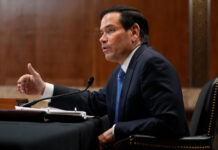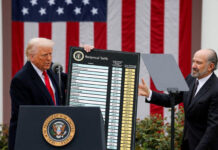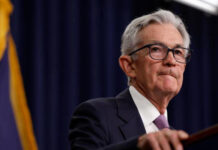JUNE 18, 2021

Stocks extended recent losses Friday for their worst week in months, after a Federal Reserve official said that the central bank may need to raise interest rates as early as next year, sooner than expected.
Investors are still trying to assess how soon the Fed will start to lift interest rates from their ultra-low levels and scale back its bond purchases. The head of the St. Louis branch of the Fed, James Bullard, told CNBC Friday that inflation was stronger than anticipated and that the first interest rate increase could come as soon as next year.
That’s sooner than the Fed’s latest estimate of possible rate increases in 2023.
“Fed governor Jim Bullard surprised investors when he insinuated that inflation could stick around through next year and force the Fed to raise interest rates,” Callie Cox, senior investment strategist at Ally Invest, said in a note.
“This bout of inflation may be temporary, and if that’s the case, it could just be a blip on the radar for the economy and the market,” Cox added. “However, inflation can be a self-fulfilling prophecy, and Wall Street is coming around to the idea that this inflation surge may stick.”
The Dow Jones industrial average shed 533.37 points, or 1.6%, to 33,290.08. The blue-chip average shed 3.5% this week, its worst week since October.
The benchmark S&P 500 index gave up 1.3% to 4,166.45, with banks, energy and utility companies leading the way lower. That marked its first losing week in the past four. For the week, the S&P 500 lost 1.9%, its worst weekly loss since February.
The index still sits just 2.1% lower from its record high set on Monday.
The technology-heavy Nasdaq Composite fell 0.9% to 4,030.38, falling the least among the major indexes. It dipped 0.3% for the week.
Stocks have come under pressure after the Fed on Wednesday raised its inflation expectations and moved up the time frame on when it will next lift rates, which influences many consumer and business loans.
Fed policymakers signaled that a rise in interest rates could come twice by late 2023, after indicating in March that they saw no increases until at least 2024. The central bank also raised its inflation expectation to 3.4%, a full percentage point higher than its projections in March. For many years, inflation has run below the Fed’s 2% goal.
Any easing up on the Fed’s aid for the economy would be a big change for markets, which have feasted on easy conditions after the central bank slashed short-term rates to zero and brought in other emergency programs.
The economy has begun to explode out of its coma as more widespread vaccinations help the world get closer to normal. At the same time, jumps in prices for raw materials are forcing companies across the economy to raise their own prices for customers, from fast food to used cars.
Banks are taking a hit from the shrinking gap between shorter- and longer-term interest rates, which helped send financial stocks in the S&P 500 down nearly 2.5% on Friday. That was one of the sharpest losses among the 11 sectors that make up the index.
When the gap is wide, the industry can make big profits from borrowing cash in short-term markets and lending it out at longer-term rates.
Short-term yields jumped sharply this week after the Fed’s indication that it may be moving up the timeline for rate increases. The two-year Treasury yield rose to 0.25% Friday from 0.23% a day before and from 0.16% a week before.
The 10-year Treasury yield, which is less directly affected by Fed moves, ended the week close to where it started, though there were some jagged moves up and down in the interim. It sat at 1.44% Friday afternoon, down from 1.51% late Thursday but not far off from its 1.46% level a week earlier.
The rate pressure helped send JPMorgan Chase down 2.6%, and it was one of the heaviest weights on the S&P 500. Bank of America dropped 2.8%.
U.S. stock markets remain open Friday even though President Joe Biden signed a bill that will add Juneteenth, which commemorates the date in 1865 when slaves in Texas first learned of the Emancipation Proclamation, as the 11th federal holiday.
Markets are set to remain open Friday because of how quickly the legislation passed through Congress, according to people familiar with the matter.
Friday is also “quadruple witching day,” the quarterly expiration of U.S. options and futures contracts that can bring increased trading volume and can add to market volatility.
“[Friday] is an options expiration day with an unusually large amount of contracts expiring so that coupled with the fact that it’s now a federal holiday where volumes will likely be low, may only add to any potential volatility,” Paul Hickey, analyst at Bespoke Investment Group, said in a note.
Courtesy/Source: AP / This article originally appeared on USA TODAY


































































































